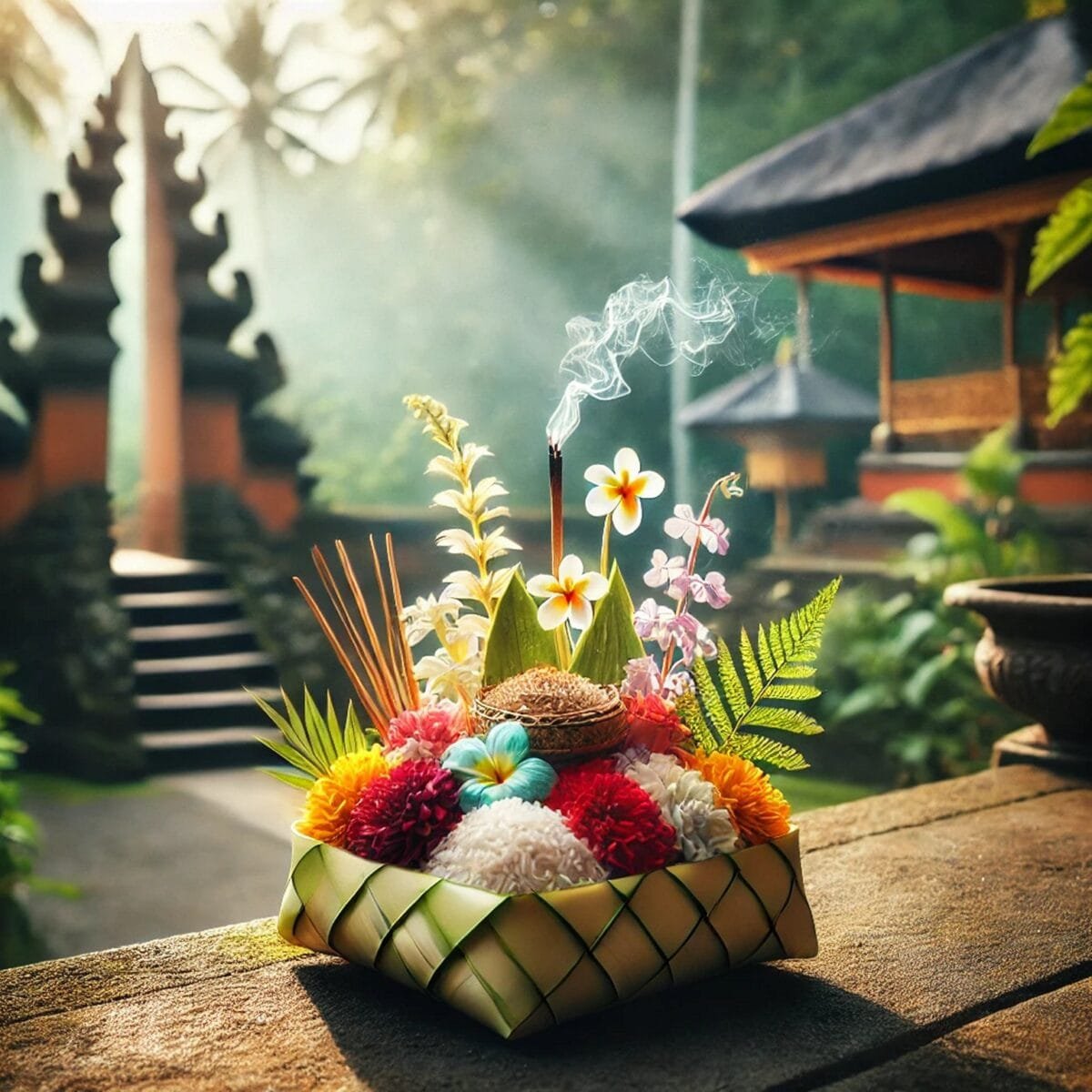“Every offering carries a prayer, and every prayer carries gratitude.”
Bali is a land of deep spirituality, where daily rituals shape the island’s unique rhythm. Among the many customs you’ll see, the small, colorful offerings placed on sidewalks, temple steps, and shrines stand out the most. These are Canang Sari, the daily offerings that reflect Bali’s deep connection to the divine. But what do they mean, and why are they so important?
What is Canang Sari?
Canang Sari (pronounced cha-nang sa-ri) is a small handwoven basket made from coconut or banana leaves, filled with flowers, incense, and sometimes food or money. It is a symbol of gratitude offered to the gods and spirits as part of the Balinese Hindu tradition.
The name itself holds meaning:
- Canang refers to the basket or tray.
- Sari means essence.
Together, Canang Sari represents the essence of an offering.
The Symbolism of Canang Sari
Every element in Canang Sari has significance:
🌸 Flowers – The arrangement of flowers represents different Hindu gods:
- White (east) – for Iswara (God of purity).
- Red (south) – for Brahma (God of creation).
- Yellow (west) – for Mahadeva (God of preservation).
- Blue or green (north) – for Vishnu (God of protection).
💨 Incense – The rising smoke carries prayers to the heavens, acting as a bridge between humans and deities.
🍚 Rice or Snacks – A symbol of gratitude for abundance and sustenance.
💵 Coins or Money – Sometimes included as a symbol of prosperity.
Why Do Balinese People Make Daily Offerings?
The daily ritual of placing Canang Sari is an act of gratitude and balance. It serves three main purposes:
- Expressing Thanks – It is a way for Balinese Hindus to thank the gods for blessings, health, and prosperity.
- Maintaining Harmony – The offerings balance good and evil forces, ensuring harmony between humans, nature, and the spirit world.
- Respecting the Spirits – Offerings are also placed on the ground to appease lower spirits, preventing disturbances in daily life.
Tip: If you see an offering on the sidewalk, avoid stepping on it! It’s considered disrespectful.
Where Can You See Canang Sari?
You’ll find these offerings everywhere in Bali:
- At temples – Placed at shrines and statues.
- In homes – Set in family temples and entrances.
- On the streets – Often on sidewalks and storefronts.
- At workplaces – In offices, markets, and even on motorbikes.
How Can You Participate in the Tradition?
If you want to experience this beautiful ritual, you can:
- Join a local offering-making class in Ubud or at a Balinese family home.
- Visit a temple during morning prayers and observe the process respectfully.
- Try making your own Canang Sari using flowers, leaves, and incense.
Final Thoughts
Canang Sari is more than just a daily practice—it’s a way of life in Bali, reflecting deep spiritual values and a harmonious relationship with nature and the unseen world. So next time you see a delicate little offering on the street, take a moment to appreciate its meaning—it’s a tiny but powerful reminder of gratitude, balance, and devotion.
Would you like recommendations for places where you can learn to make Canang Sari? 😊







